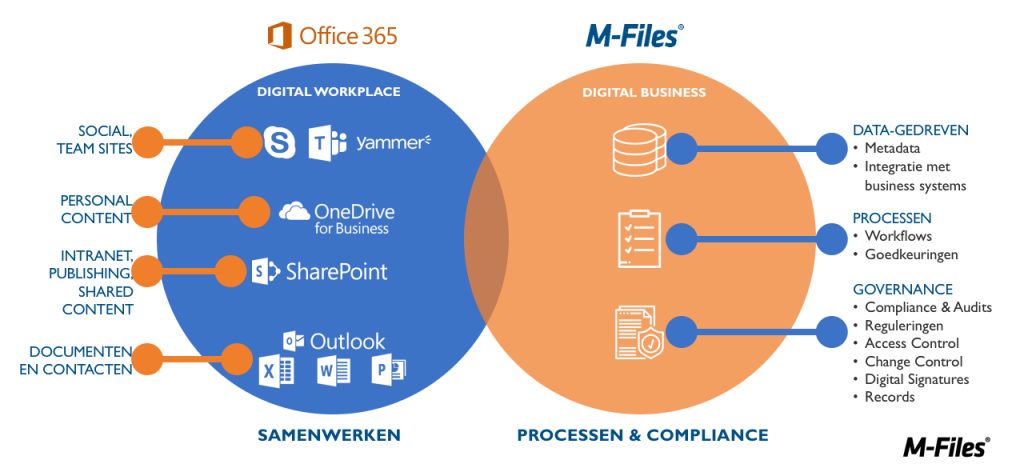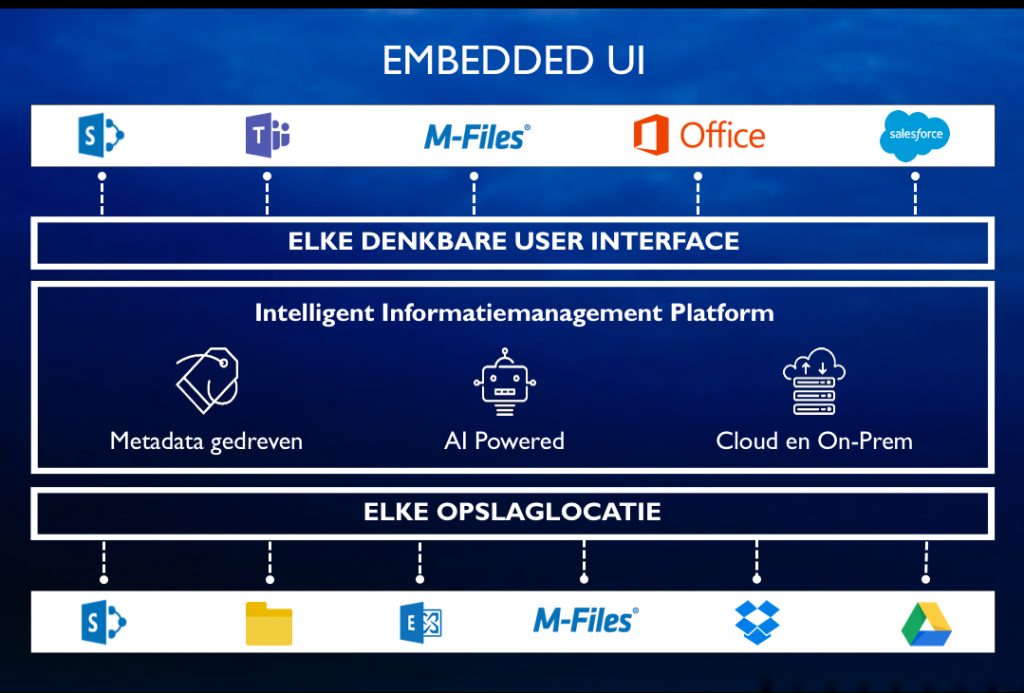Office 365, who doesn't know it? Or rather, who does not use it? The use of this Microsoft product by organisations in the Netherlands is booming. And not without reason, it is well-functioning productivity software in the cloud that runs smoothly. But is Office 365 also the document management solution almost every organisation needs?
Partly.
Of course, the individual components of Office 365 are arguably the best of their kind. With Word, PowerPoint and Excel, everyone processes documents easily and quickly. Outlook is still the most widely used and undisputed e-mail platform.
Combined with SharePoint or OneDrive, it is a convenient solution that allows employees to collaborate on documents. Also, SharePoint and OneDrive create the ability to share documents online. A kind of 'my documents' in the cloud. You have access to your documents from anywhere and, if you want, so do your colleagues.
What more could you want?
Quite a lot, actually.
Because in what ways does this duo provide intelligence and further document management functionalities? Things like automatic document classification, workflows, advanced permission management, version control and digital signing. And how do Office 365, SharePoint and OneDrive handle metadata? Generated fully automatically if required?
Not.
Fortunately, there is M-Files. For organisations that want to add intelligence to their information and document management. Organisations ready for the next step in efficiency, flexibility and their digital workplace.
As the most innovative information platform, M-Files has all these added values. But the best part is that Office 365 and M-Files form a perfect-fit
In this marriage, productivity and intelligence around your processes come together perfectly.

The integration with productivity applications such as Office 365 characterises the openness of M-Files. This openness is not limited to Office 365, but can also be integrated, for example, with business applications such as SAP and SalesForce or, for example, with other storage locations such as Box and Google Drive.

In this way, you enrich your existing solutions and locations with intelligence and artificial intelligence and bring everything together under one uniform user interface. You optimise your processes without disrupting them. Think of quality management, contract management, HR processes, risk management, sales processes, invoice management and actually every conceivable information process.
Accelerate the implementation and adoption of Office 365. Make daily work easier for your colleagues and streamline your (information) processes and workflows.